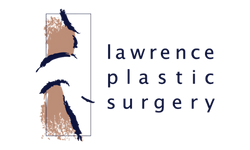Fat Grafting of the Body
Fat grafting (also called fat transfer or lipoinjection) involves removing fat from an area where you have excess (abdomen, trunk, thighs, etc.) with gentle liposuction techniques, preparing it in a centrifuge or by filtering and injecting it in areas where you may need additional fullness. Your own living fat cells make an excellent, long-lasting filler material. This is an exciting new frontier in plastic surgery, as there is ongoing research into the beneficial results of the stem cells contained within the transferred adipose tissue.In addition to using fat in the face and breasts, we are currently using it to correct defects in other areas of the body caused by injury, scarring, surgery, or congenital problems.
Fat Grafting Overview
The Procedure
Fat grafting can be done under local anesthesia or in the operating room, depending on the area and the extent of fat grafting required. We typically remove fat from the abdomen, although other donor areas can be utilized. The area for fat removal is infiltrated with a very dilute local anesthetic solution, then the fat is harvested using liposuction cannulas through small incisions placed where they can easily be well hidden. The fat is then prepared for reinjection and injected into the areas of the body requiring more fullness. The process usually takes 1-2 hours and is done on an outpatient basis.
Fat grafting is not really a new procedure, as it has been done in various ways for decades. However, in more recent years we have gained a greater understanding on how to harvest, process, and reinject the fat to make this a safer procedure with better results. The role that stem cells contained in the fat may play in this process is an area of intense research right now, with new information and applications for patients emerging all the time. There is interest in complete breast reconstruction using only the patient’s fat, although this has only been done in a limited number of patients in the U.S. and elsewhere.
At Lawrence Plastic Surgery we have been doing fat grafting for over 20 years and are excited to see how this technology and its applications are evolving. We continue to explore and refine our techniques to give us another important tool for our patients.
Recovery
The main side effects are local bruising and swelling at both the donor area and injection sites along with minor to moderate pain for a few days. Patients are usually able to return to normal activities after a few days, although we usually advise waiting 1-3 weeks before resuming strenuous exercise.
There is always some degree of fat reabsorption (not all the fat cells survive) and sometimes more than one treatment is necessary to achieve adequate fullness or correction of the defect. The results are long lasting.
Financing & Payment Options
Your insurance company may not cover the removal of benign lesions if the removal is done for purely cosmetic reasons. We can give you price information prior to the procedure so you can understand your financial obligations.
Patient Forms
Please fill out paperwork at least 24 hours before your scheduled appointment.
